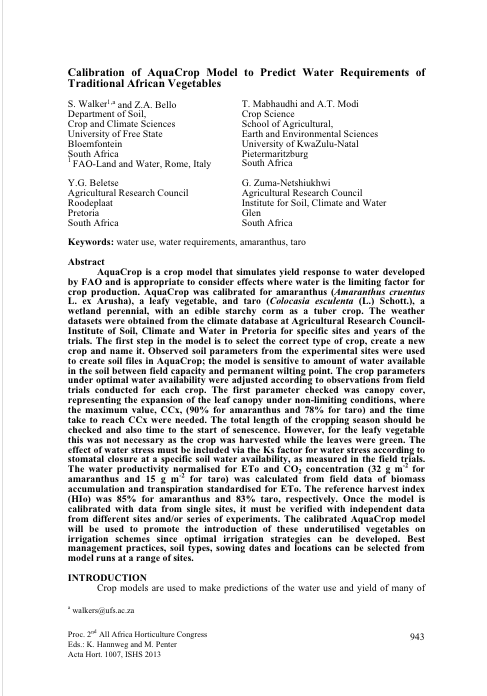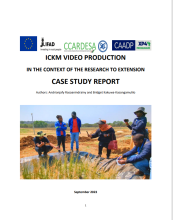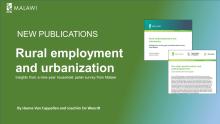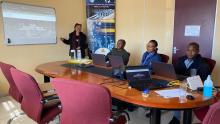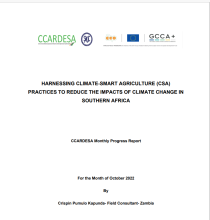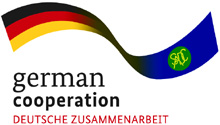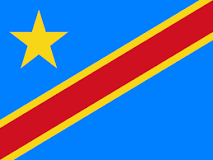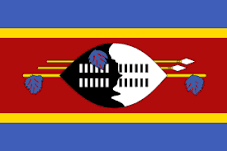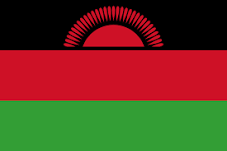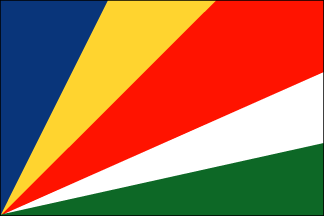AquaCrop is a crop model that simulates yield response to water developed by FAO and is appropriate to consider effects where water is the limiting factor for crop production. AquaCrop was calibrated for amaranthus (Amaranthus cruentus L. ex Arusha), a leafy vegetable, and taro (Colocasia esculenta (L.) Schott.), a wetland perennial, with an edible starchy corm as a tuber crop. The weather datasets were obtained from the climate database at Agricultural Research Council-Institute of Soil, Climate and Water in Pretoria for specific sites and years of the trials. The first step in the model is to select the correct type of crop, create a new crop and name it. Observed soil parameters from the experimental sites were used to create soil files in AquaCrop; the model is sensitive to amount of water available in the soil between field capacity and permanent wilting point. The crop parameters under optimal water availability were adjusted according to observations from field trials conducted for each crop. The first parameter checked was canopy cover, representing the expansion of the leaf canopy under non-limiting conditions, where the maximum value, CCx, (90% for amaranthus and 78% for taro) and the time take to reach CCx were needed. The total length of the cropping season should be checked and also time to the start of senescence. However, for the leafy vegetable this was not necessary as the crop was harvested while the leaves were green. The effect of water stress must be included via the Ks factor for water stress according to stomatal closure at a specific soil water availability, as measured in the field trials. The water productivity normalised for ETo and CO2 concentration (32 g m-2 for amaranthus and 15 g m-2 for taro) was calculated from field data of biomass accumulation and transpiration standardised for ETo. The reference harvest index (HIo) was 85% for amaranthus and 83% taro, respectively. Once the model is calibrated with data from single sites, it must be verified with independent data from different sites and/or series of experiments. The calibrated AquaCrop model will be used to promote the introduction of these underutilised vegetables on irrigation schemes since optimal irrigation strategies can be developed. Best management practices, soil types, sowing dates and locations can be selected from model runs at a range of sites.
International Society for Horticultural Science

